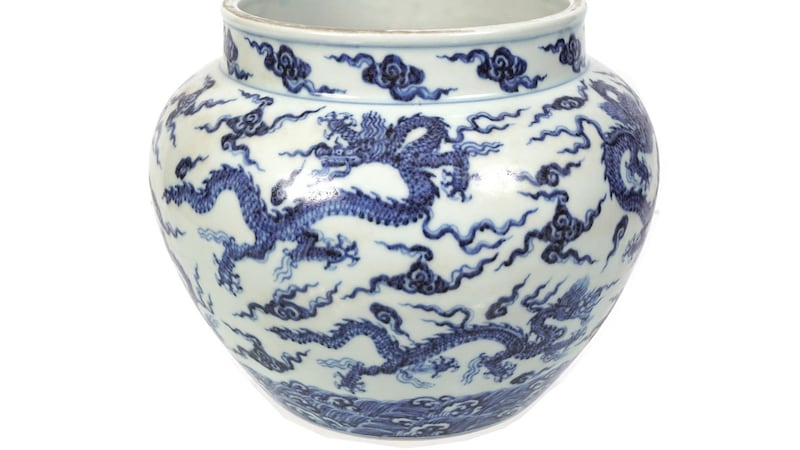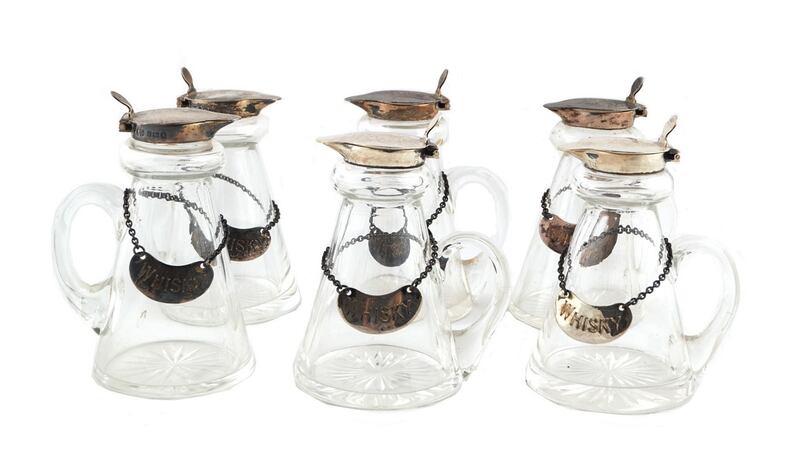In the peaceful countryside of north Tipperary stands Lissanisky House, its imposing five-bay facade turned towards the Silvermines mountains. Home to the Sheahan family of Nenagh for several generations, the three-storey over basement Georgian country house is to be sold, and its contents are being auctioned by Sheppard’s this week.
Despite the solidity of its cut-stone entrance and the impressive fanlight above the hall door, the early history of the house has been swallowed up in the mists of time. The land once belonged to the Hon Otway Fortescue Toler, a younger brother of the third earl of Norbury and a descendant of John Toler, the “hanging judge” who tried Robert Emmet. In 1837 the house was occupied by an R Smithwick, who was probably connected to the Kilkenny brewing family.
"What we do know is that at one time it belonged to Napoleon's physician," says Philip Sheppard. Born in Blackrock, Co Dublin in 1770, Barry O'Meara was a navy surgeon who was serving on the Bellerophon when Napoleon surrendered after the Battle of Waterloo. The doctor's professional and linguistic skills impressed the ex-emperor, who requested that O'Meara accompany him into exile on St Helena.
O’Meara became friends with his irascible charge and was the only doctor ever to have operated on Napoleon when, in 1817, he removed one of the statesman’s wisdom teeth. On his return to London O’Meara spoke out about the harsh conditions in which Napoleon was being held. This brought him into conflict with the British admiralty and led, eventually, to his dismissal from the navy. Undaunted, O’Meara rented rooms in London, hung the wisdom tooth on the window and set up shop as a dentist.
When Napoleon died, in 1821, O’Meara published his diaries from St Helena. They became an instant best-seller, turning their author into a celebrity and star of the after-dinner speaking circuit.
O'Meara's son was also a doctor, and his grandson, Frank O'Meara, was an Impressionist artist. A young man of uncertain health, he produced relatively few paintings before he died at the age of just 35 – but one of his works is in the Lissanisky sale. Lot 62, West Brittany: A Coastal Relief, signed and dated 1882, has an estimate of €3,000-€5,000.

Country-house life
The Lissanisky sale contains a good selection of paintings. Many illustrate the preoccupations of country-house life: a large portrait of a hunting dog (Lot 54, €12,000-€14,000) and two Grand Tour-style views of Venice (Lot 64, €10,000-€12,000, and Lot 910, €10,000-€15,000) hang in the sitting-room to the left of the entrance hall. There are a number of landscapes by the 19th-century French artists Stanislas Lepine (Lot 41, €10,000-€12,000) and Emmanuel Gallard-Lepinay (Lot 48, €6,000-€9,000).
Lot 68 (€400-€600) is an oil-on-panel corridor portrait of Anne of Cleves, fourth wife of Henry VIII, in the style of Holbein; Lot 282 (€200-€300) is a cartoon of Napoleon from 1820, his face etched with female figures, his tunic a spider’s web in which Europe is irredeemably ensnared.
The furniture in the sale includes a pair of 19th-century painted demi-lune console tables (Lot 812, €8,000-€12,000), an 18th-century Irish side table in mahogany with a scallop-shell frieze invoking Venus, the goddess of love (Lot 848, €4,000-€6,000) and a pair of 18th-century pier mirrors in carved giltwood with their original glass plates (Lot 779, €4,000-€6,000).
There are two fine George III-style white marble chimneypieces (Lot 864 and Lot 102, each €6,000-€9,000), a pair of mahogany armorial-backed hall chairs from about 1800 (Lot 664, €1,500-€2,000) and an 18th-century Hepplewhite elbow chair with an armorial back (Lot 88, €1,500-€2,500). A collector’s chest from 1690 opens to reveal a suite of tiny drawers with chinoiserie decoration (Lot 232, €2,500-€3,500) while the inlaid doors of a graceful Queen Anne period walnut cabinet on a cabriole-legged stand (Lot 650, €1,500-€2,000).
The deep honeyed shades of walnut are also shown off to great effect in a pair of carved window seats with square tapered legs in the form of cherub masks (Lot 114, €4,000-€6,000), and an oysterwood and walnut oval occasional table, dating to about 1720 (Lot 410, €1,400-€1,800).

The house contains many decorative objects with an oriental flavour, from a Chinese lacquered coffee table (Lot 670, €1,400-€1,800), to a Japanese figure of a geisha and her attendant (Lot 388, €1,200-€1,800), a Wedgwood Egyptian-themed terracotta vase (Lot 843, €1,400-€1,800) to a pair of terracotta lion masks (Lot 792, €800-€1,200).
Among the silverware is the Calcutta cup, a chunky 19th-century silver Indian racing trophy (Lot 187, €2,500-€3,500), and an oval 18th-century silver soup tureen made by Richard Calderwood in Dublin (Lot 163, €1,500-€2,500).

Chinese dragons
One of the most expensive pieces in the sale is a Chinese blue and white bowl decorated with dragons floating on clouds and possibly dating from the Ming period (Lot 146, €20,000-€30,000). Decorated in the Chinese style, but in red, is a large Sampson armorial dessert service, made to commission for an earl. (Lot 308, €1,200-€1,800).

At the more modest end of the price scale are six individual silver-mounted whisky decanters or tot jugs (Lot 168, €150-€250) and a set of silver menu holders in the form of fox heads. (Lot 169, €200-€300).
Anyone who loves whippets will find many, many incarnations of their slender forms in ceramic and bronze. Then again, the catalogue for the Lissanisky sale lists pretty much every kind of object you could imagine, from a Hermes silk scarf (Lot 714, €200-€300), to an Aboriginal boomerang (Lot 450, €80-€120). And the house itself, with its quiet outbuildings and nine bedrooms offering glorious views of the Silvermines, is well worth a look. A 90-minute drive from Dublin, it’s easily accessible from the N7.
Previews begin today and continue until Monday. This may be a “typical” Irish country-house sale but such sales are, according to Philip Sheppard, becoming rarer and rarer events in the auctions calendar: we should treasure them while we can.
see sheppards.ie












